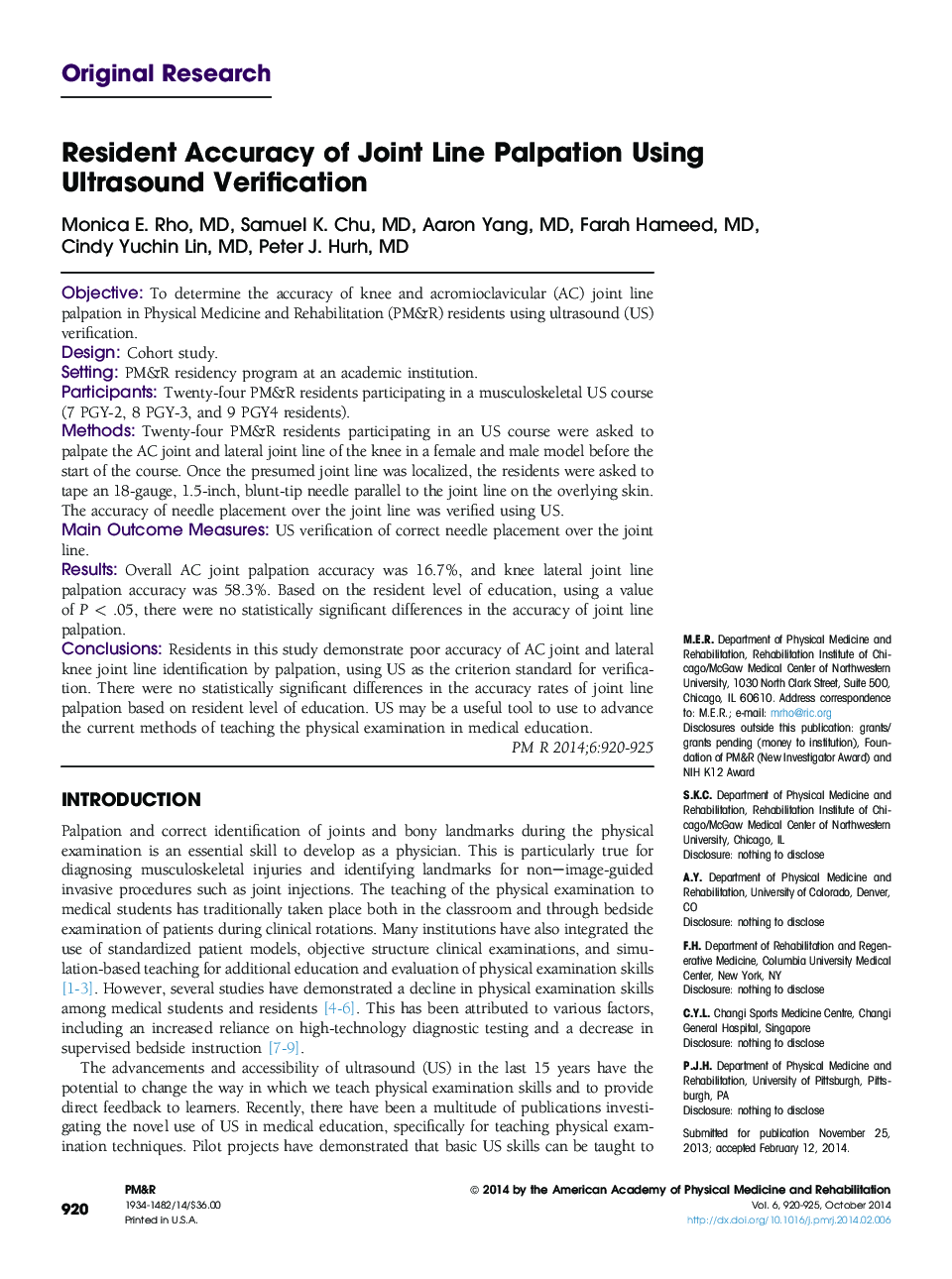| Article ID | Journal | Published Year | Pages | File Type |
|---|---|---|---|---|
| 2715755 | PM&R | 2014 | 6 Pages |
ObjectiveTo determine the accuracy of knee and acromioclavicular (AC) joint line palpation in Physical Medicine and Rehabilitation (PM&R) residents using ultrasound (US) verification.DesignCohort study.SettingPM&R residency program at an academic institution.ParticipantsTwenty-four PM&R residents participating in a musculoskeletal US course (7 PGY-2, 8 PGY-3, and 9 PGY4 residents).MethodsTwenty-four PM&R residents participating in an US course were asked to palpate the AC joint and lateral joint line of the knee in a female and male model before the start of the course. Once the presumed joint line was localized, the residents were asked to tape an 18-gauge, 1.5-inch, blunt-tip needle parallel to the joint line on the overlying skin. The accuracy of needle placement over the joint line was verified using US.Main Outcome MeasuresUS verification of correct needle placement over the joint line.ResultsOverall AC joint palpation accuracy was 16.7%, and knee lateral joint line palpation accuracy was 58.3%. Based on the resident level of education, using a value of P < .05, there were no statistically significant differences in the accuracy of joint line palpation.ConclusionsResidents in this study demonstrate poor accuracy of AC joint and lateral knee joint line identification by palpation, using US as the criterion standard for verification. There were no statistically significant differences in the accuracy rates of joint line palpation based on resident level of education. US may be a useful tool to use to advance the current methods of teaching the physical examination in medical education.
